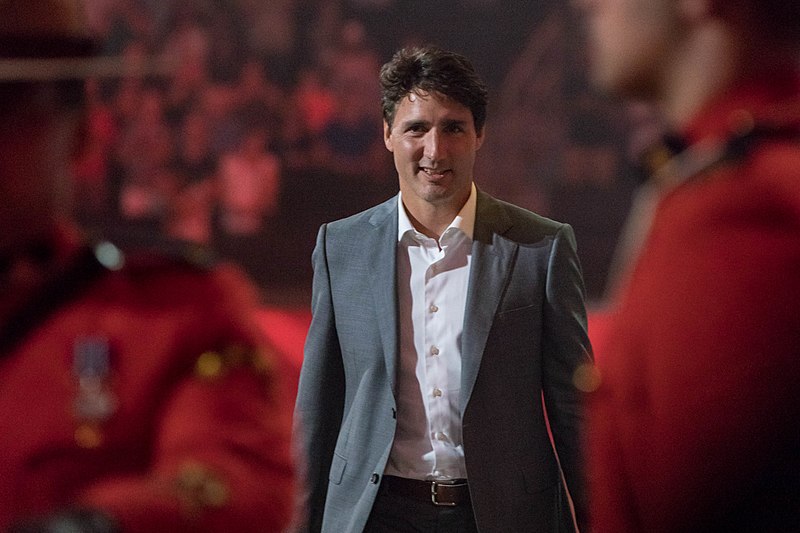
Justin Trudeau stepped down as the Canadian Prime Minister on Monday, marking the end of his eight-year tenure amid mounting pressure from his Liberal Party colleagues and escalating
tensions with the United States.
The resignation follows weeks of internal discord within the Liberal Party, driven by disagreements over how to handle U.S. President Donald Trump’s re-election and his proposed 25 percent tariff on Canadian goods. The tariff plan, unveiled by Trump shortly after his reelection, created significant diplomatic strain, prompting Trudeau to fly to Mar-a-Lago in a last-minute bid to mend relations with the U.S. president.
During their meeting, reports surfaced that Trudeau had pleaded with Trump to reconsider the tariff proposal, warning of severe economic repercussions for Canada. In response, Trump reportedly made a provocative suggestion, proposing that Canada could become the 51st U.S. state, later mocking Trudeau by referring to him as “Governor Trudeau.” Trump justified the proposed tariffs as a means to pressure Canada into tightening border security and addressing illegal immigration.
The resignation coincided with the U.S. Congress’s certification of Trump’s reelection victory, underscoring the political challenges Trudeau faced in maintaining Canada’s diplomatic standing. Trudeau’s departure also preempted an emergency meeting scheduled by the Liberal Party to address the growing internal rift.
In a statement delivered from Rideau Cottage in Ottawa, Trudeau announced his intention to step down as both Prime Minister and Party Leader. Speaking in both English and French, he described the decision as difficult but necessary for the nation’s well-being. “Parliament has been paralyzed for months despite our best efforts to move forward. I cannot lead a successful reelection campaign while battling internal party divisions,” he said.
Trudeau added that he would remain in office until the Liberal Party selects a new leader through a nationwide, competitive process. The party must act quickly, as general elections are set for the fall, with polls favoring the Conservative Party led by Pierre Poilievre.
A Tumultuous Tenure Comes to an End
Trudeau, 53, assumed office in November 2015, quickly gaining international recognition for his progressive policies and charismatic leadership. However, his popularity waned in recent years amid various controversies and increasing political polarization.
In August 2023, Trudeau and his wife Sophie announced their separation after 18 years of marriage. Despite personal challenges, Trudeau continued to serve as Prime Minister, residing at Rideau Cottage with his three children. He revealed that he informed his children of his resignation during dinner on Sunday evening.
While Trudeau was preparing his resignation speech, his ex-wife Sophie posted on Instagram about a family skiing trip in Gatineau Park, underscoring the personal and professional contrasts in Trudeau’s life.
Trudeau’s political career was marred by several scandals, including the resurfacing of a photo showing him in blackface at a 2001 party, which drew widespread criticism. Additionally, his government faced backlash over its handling of immigration and housing issues, with Trudeau admitting in October that Canada needed to reduce its intake of new immigrants due to pressures on the housing market.
Economic and Political Fallout
Following reports of Trudeau’s impending resignation, the Canadian dollar experienced a notable rebound after suffering a significant dip the previous month. Meanwhile, Trump expressed optimism about a potential leadership change in Canada, telling radio host Hugh Hewitt that Poilievre’s leadership would result in more aligned U.S.-Canada relations.
“Our views would be more aligned, certainly,” Trump remarked, adding, “We don’t need anything from Canada.”
Trudeau’s resignation came just weeks after Deputy Prime Minister Chrystia Freeland also stepped down, citing irreconcilable differences with Trudeau over how to approach Trump’s presidency and the proposed tariffs.
As Canada prepares for general elections in October, Trudeau’s departure marks a significant political shift. Once celebrated as a transformative leader, Trudeau’s fall from grace underscores the challenges of navigating a rapidly changing political landscape. Only one in five Canadians now believe the country is on the right track under Trudeau’s leadership.
In his final remarks, Trudeau reaffirmed his commitment to Canada, saying, “I have always been driven by what is best for Canadians. While stepping aside is difficult, it is the right thing to do for the country.”
Background on Trump’s Tariff Proposal
In December, shortly after winning a second term, Trump announced his intention to impose a 25 percent tariff on goods from Canada and Mexico. He justified the move as a response to their insufficient efforts in addressing the fentanyl and migration crises. Trump also proposed an additional 10 percent tariff on Chinese goods, further signaling a shift toward protectionist economic policies.
In a Monday morning post, Trump dismissed reports suggesting he might scale back his tariff plans, labeling them as “fake news.” He wrote on Truth Social, “The story in the Washington Post, quoting so-called anonymous sources, incorrectly states that my tariff policy will be pared back. That is wrong.”
With Trudeau’s resignation and the looming general elections, Canada faces a period of political uncertainty. The upcoming months will determine how the country navigates its internal divisions and external pressures in a rapidly evolving geopolitical environment. Photo by 2017 Canada Summer Games, Wikimedia commons.






































